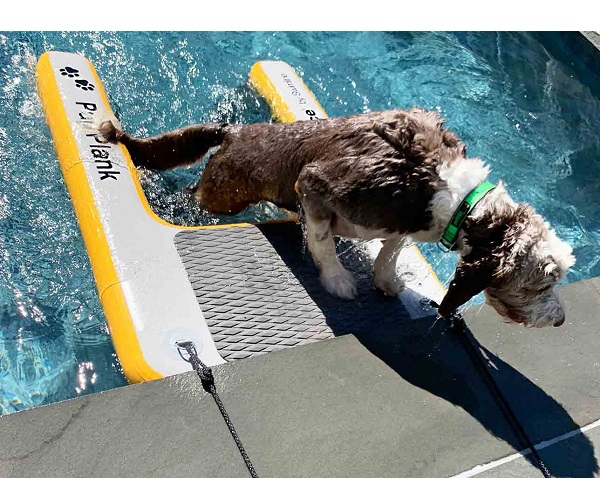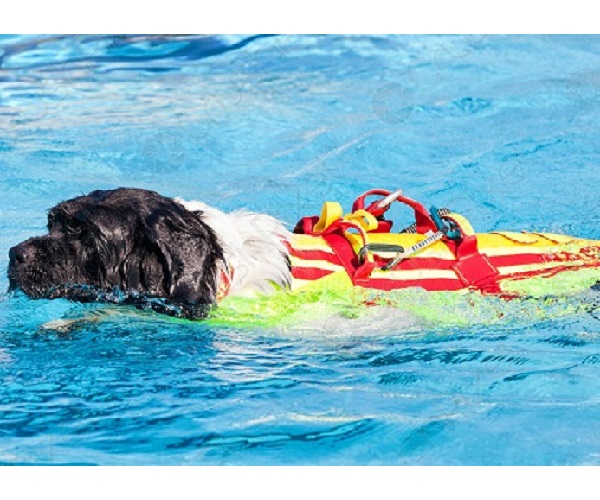
Table of contents of the page
En Ok Pool Reform We are very loyal to our best friends, pets, and for this same reason, in the section on Pet pool safety We have made a page with the suggestions of the How to help with suffocation with the dog drowning maneuver?
Symptoms of dog drowning in pool
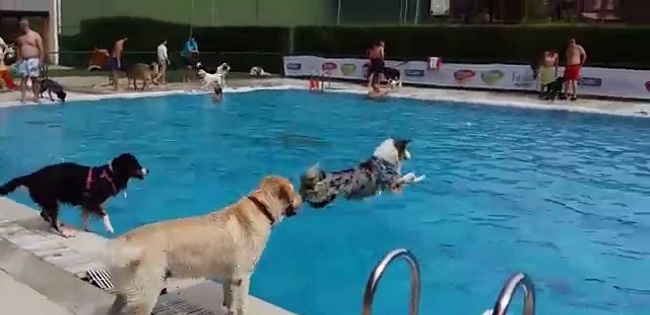
Possible consequences after the dog almost drowned in the pool
If you suspect your pet is nearly drowning, take him to your veterinarian as soon as possible. When left untreated, potential water in the lungs can collapse the organ.
A dog can drown in water or any other liquid, causing suffocation. Asphyxiation is a serious situation and can lead to the death of the dog if the appropriate maneuvers and diagnostic tests are not carried out in time.
The symptoms of drowning in a dog are similar to those in a human: difficulty breathing, cough, dyspnea, anxiety and agitation. If the dog is unconscious, it is necessary to perform artificial respiration as soon as possible.
My dog is choking or breathing hard: why and what do I do?
What do I do if my dog drowns?
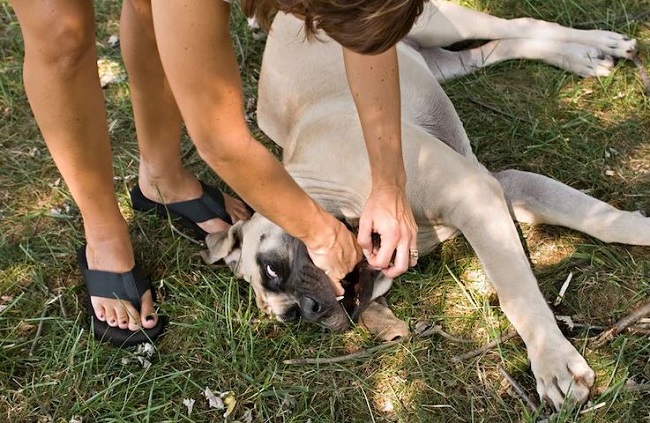
What to do if my dog drowns

What can you do if your dog chokes and can't breathe

What to do in dogs drowning
Next, we make a list of the procedures on what to do if my dog drowns and then we describe them one by one in this same order throughout the page.
- – First, if your dog suffers an accident in the water, it is important to dry him carefully before trying anything else.
- check if he is really coughing or choking
- Rule out conditions that may cause your dog to behave as if he is choking
- Call an emergency vet
- Don't overwhelm him and let him cough
- Examine mouth and throat and if present, remove objects
- Perform the Heimlich Maneuver in dog
- IF the Heimlich maneuver in a dog DOES NOT WORK: apply pressure with dog drowning maneuver CPR
- Once recovered: consider artificial respiration
- Diagnostic tests after the situation of asphyxiation
1st point: What to do if I suspect that my dog has suffered an accident in the water

If your dog has an accident in the water, it is important to dry him thoroughly before trying anything else.
If you suspect your dog may be suffering from hypothermia, it is important to warm him slowly before attempting CPR.
- To do this, hold the dog against your body and wrap it in a blanket or towel to keep it warm.
- Then, follow the instructions above to perform CPR.
If you continue to have difficulty breathing after you have dried and warmed your pet, it is important to take him to the vet immediately.
Early medical treatment can be vital in saving your pet's life.
2nd step What to do if my dog is choking or choking?: check if he is really coughing or choking

Make sure if the pet is really suffocating
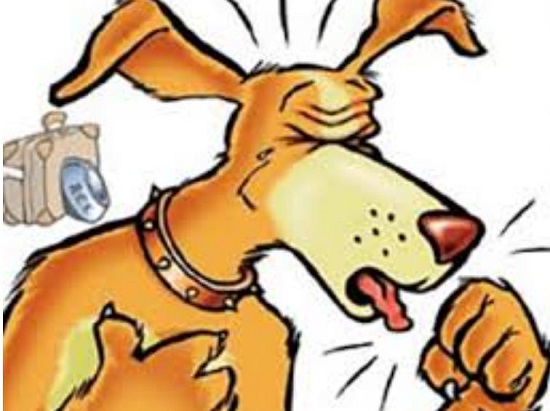
Check If they are truly choking, they will not be able to speak, breathe, or cough effectively.
- There are a few things you can do before performing the Heimlich maneuver on someone. First, make sure the pet is choking and not just coughing.
- Then call the emergency vet or have someone else call for help.
- Once emergency medical help has been notified, you can begin taking action.
If your dog is having trouble breathing, it may be a sign of drowning.

This condition can be caused by a variety of factors, including allergies, respiratory infections, and even heart disease.
If you notice that your dog is having difficulty breathing, it is important that you take him to the vet immediately for an examination. Drowning can be life-threatening, so it's crucial that you get your dog treated as soon as possible.

Observe if the dog shows signs of choking and calm him down.
To begin with, note that if the dog cannot breathe, it will show many behaviors that indicate this.
When trying to determine if your pet is suffocating, try to calm him down first, because the more scared he is, the more oxygen he will need and the worse the situation will be.
How to examine if my dog is choking
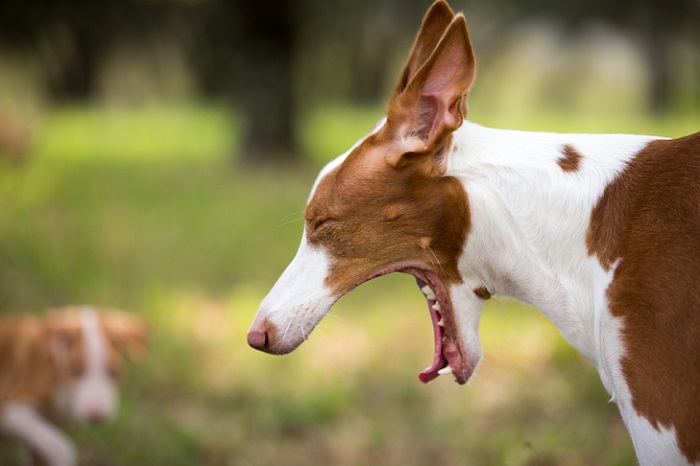
Check if the choking animal is conscious or not

What to do if the dog is choking but conscious
- For one, if your dog is choking, the first thing you should do is try to remove the object that is blocking his airway.
- Open your mouth quickly, and with good lighting, observe the oral cavity completely. If we see the stuck element, without hesitation, we insert our hand and remove it immediately.
- Although, if you can't remove the object, take your dog to the vet immediately.
What to do if the dog choked but unconscious

- On the other hand, if your dog is unconscious but still breathing, place him in a recovery position and call for emergency help.
- Finally, stress that you do not have to attempt to give CPR to your dog unless you are trained to do so.
Effects and complications derived from dog drowning symptoms
How to recognize the symptoms of suffocation in a pet
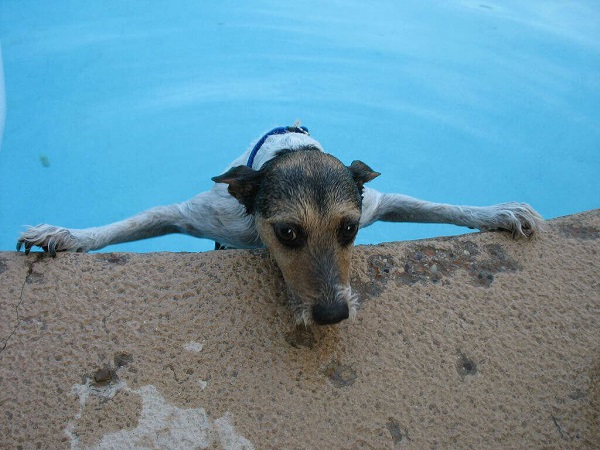
To recognize the symptoms of suffocation in a pet, we must know that in a drowning situation, at first our pet may appear very nervous, panting and experiencing significant dyspnea (respiratory difficulty).
- For this reason, they will try to cough and stretch their neck and head to breathe better, and sometimes we can hear strident noises when breathing.
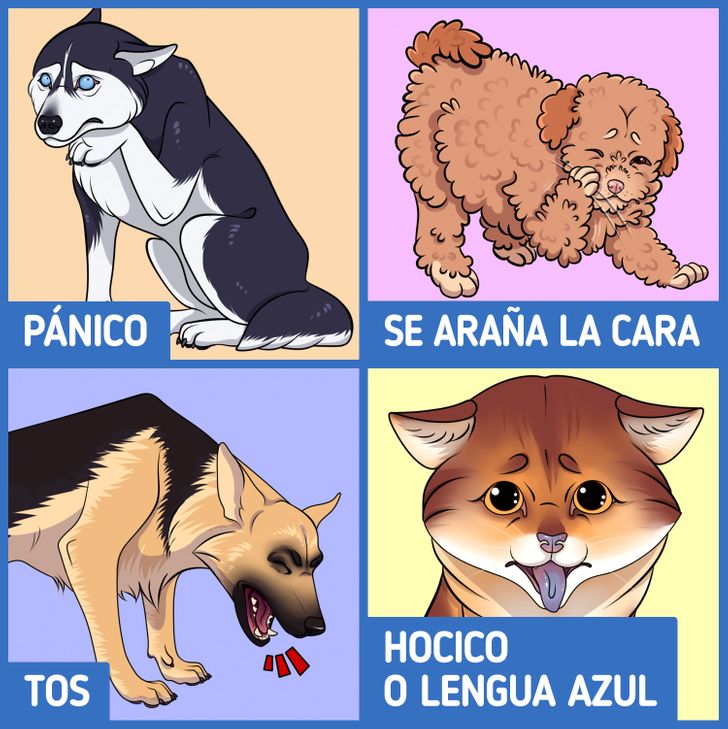
Signs produced by dog drowning
Symptoms of drowning in dogs may include
- Excessive choking or drooling (check to see if the dog can swallow; if so, this is less likely to be a physical obstruction).
- Difficulty breathing
- Blue gums or tongue
- fast heartbeat
- Collapse
- If you are in the “out of breath position,” with your head and neck bent in a straight line.
- Appears very agitated or frantic, puts his paw on his mouth and cries.
- Strong cough, wheezing, or shortness of breath
- Gray or blue gums
- If you have a visible object in the back of your throat.
- If there are exaggerated movements in your chest.
- Loss of consciousness
Hypoxia in the pet: Situations that can happen with the dog's lack of oxygen
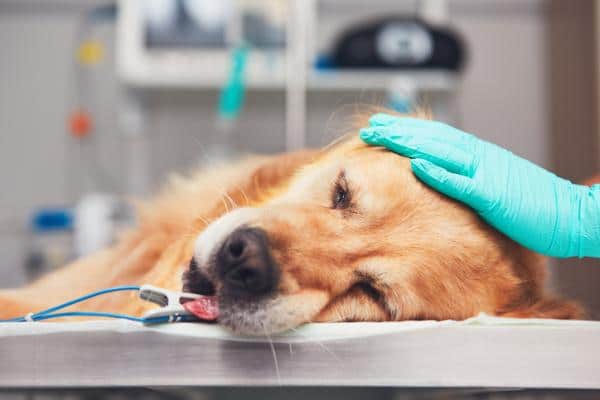
Dog drowning: hypoxia in the pet
When oxygen does not reach the blood correctly, a situation of hypoxia in the pet, which we can detect by the presence of cyanosis, which is the bluish color of the mucous membranes (inner surface of the lips, gums, palate and tongue and the ocular conjunctiva). The exception is carbon monoxide poisoning, in which the mucous membranes are reddish.
From here, the animal can stop breathing (respiratory arrest) and collapse unconscious.
In that case, we will notice that the thorax stops moving rhythmically, and if we bring glass (glasses, cell phone, mirror) close to our nose, it will not fog up.
After 3 – 5 minutes of hypoxia due to drowning in a pet: probability of cardiac arrest
How to identify cardiac arrest in dogs?
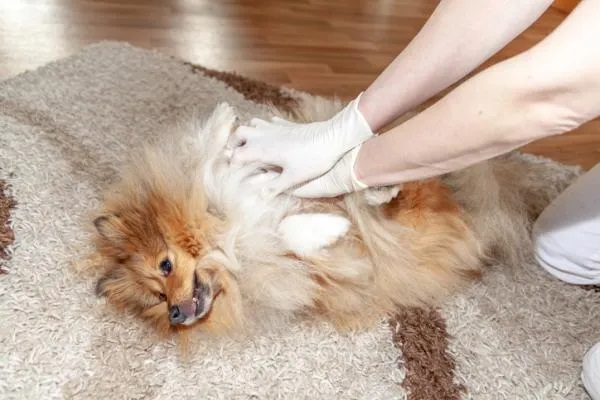
Sudden onset of shortness of breath, apparent weakness, or a distended abdomen may be signs of problems cardiac in dogs. Often there are no clear symptoms, so the best option for your dog are regular visits to the vet.
To detect if the heart is pumping, the pulse should be taken on the inner thigh, or palpate the heartbeat by placing the palm of the hand on the chest, close to the sternum.
Cardiopulmonary resuscitation in drowning dogs
What can we do if our dog goes into cardiorespiratory arrest?
Step 3: Rule out conditions that may cause your dog to behave as if he were choking
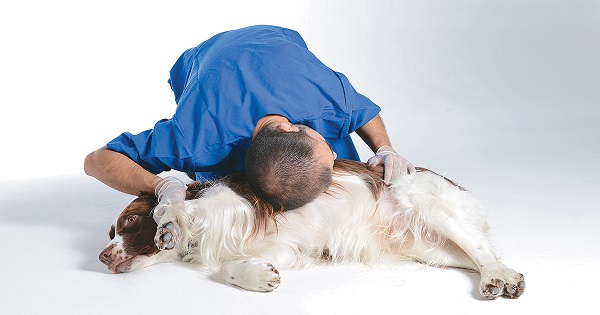
Rule out other causes before performing dog drowning maneuvers
Rule out other causes before performing dog drowning maneuvers: You can make things worse instead of fixing them if you perform certain maneuvers when you don't need them.
Therefore, it is important to be as sure as possible that your dog is choking and in danger, rather than just thinking that this could be the case.
Conditions can cause your pet to behave as if he were in a dog drowning episode:
Have you noticed that my dog sneezes a lot and seems to choke often?
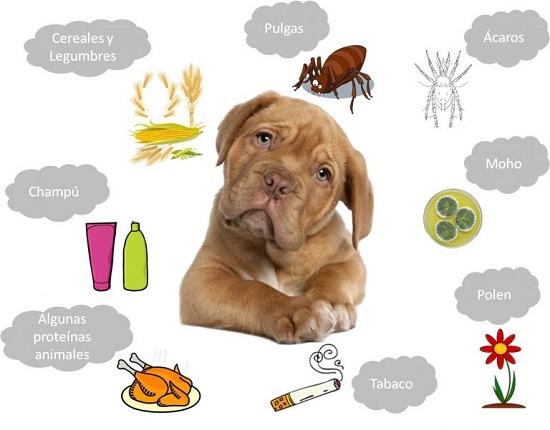
If your dog sneezes a lot and seems to be having trouble breathing, he may be suffering from allergies or a respiratory infection.
Allergies are the most common cause of chronic sneezing in dogs and can be caused by anything from dust and pollen to food and environmental irritants. If your dog's sneezing is accompanied by other symptoms such as a runny nose, watery eyes, or cough, it is likely due to an allergy. Respiratory infections, on the other hand, generally cause more serious symptoms such as fever, lethargy, and loss of appetite. If you are concerned that your dog may have an allergy or respiratory infection, take him to the vet for evaluation.
You can make things worse instead of fixing them by performing certain maneuvers on a dog that doesn't need them. Therefore, it is important to be as sure as possible that your dog is choking and in danger, rather than just thinking that this could be the case.
Conditions that may resemble dog drowning

- respiratory disorders: Respiratory problems, such as bronchitis or asthma, can cause your dog to behave as if he is drowning.
- Heart problems: If your dog has a heart problem, he may have difficulty breathing and behave as if he is drowning.
- Panic attacks: Panic attacks can cause your dog to breathe rapidly and find it difficult to breathe, which could make him feel like he is drowning.
- Tracheobronchitis: inflammation of the airways that can cause breathing difficulties and make your dog feel like he is drowning.
- Kennel cough It is an infection that causes the airways to be painful, swollen, and irritated. If your dog is coughing, it is important to take him to the vet so he can diagnose the cause and treat him appropriately. Kennel cough is usually caused by viruses or bacteria, so treatment will require antibiotics. It's also important to make sure your dog is drinking enough water and resting, as coughing can be very tiring.
- A long soft palate: A common anatomical quirk found in many dogs is having a tongue and soft palate that are too large for their mouth. This is particularly common for brachycephalic dogs (those with short noses and baby-like faces) such as the pug, Pekingese, Lhasa Apso, and shih tzu, but also occurs in small breeds such as the poodle, west highland white terrier, dachshund, spitz and pomeranian. The result is that when the dog inhales strongly, it sucks the end of the soft palate and pushes it towards the entrance of the trachea. This temporarily reduces or blocks the windpipe and the animal makes a series of dramatic snorting or choking sounds, as if choking. This is only a temporary crisis, since when the dog swallows, the soft palate moves away from the trachea and he can breathe again. If you're not sure, give him food or a treat. If you receive and swallow the food, you will not be choking.
What to do if you think your dog is suffering from one of these drowning-like problems
To start, mention that if you think your dog may be suffering from one of these problems, consult your veterinarian immediately instead of trying to perform Heimlich maneuvers. If you are unsure whether your dog is choking or not, call your vet immediately for advice. Don't try to guess whether your dog is in danger or not; Better to err on the side of caution and call the vet to tell you what to do.
Step 4: Call an emergency veterinarian

If the pet is really suffocating: call or go to the vet immediately
If you think your dog may be suffering from drowning, it is important to seek medical attention immediately.
- This condition can be very serious and life-threatening, so it is crucial to get your dog to the vet as soon as possible.
- On the other hand, we encourage you to talk to your veterinarian if you have questions or concerns about drowning in dogs.
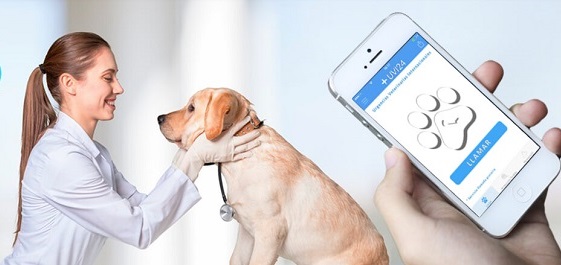
The veterinarian will inform you of the most appropriate first aid procedures for your dog.
- First of all, you may be briefed on first aid procedures while you wait for emergency help, and you will probably be asked to bring your pet in immediately.
- If you can't reach your vet, look for 24-hour emergency vets.
- You can usually find their phone number in guides or you can call an animal rescue or welfare agency for information. Large towns and cities usually have emergency veterinarians and animal hospitals.
- In short, the local emergency number will be able to give you the number of the emergency veterinarian who can help you over the phone.
5th step in advance of the Heimlich maneuver: Do not overwhelm him and let him cough

Dog drowning: see if my dog chokes and coughs
Observe if the dog coughs. At first, if your dog can cough, wait a bit to see if he can cough up the object he choked on on his own.
- Just wait if he looks like he can breathe okay.
- If he also wheezes or struggles to breathe, call your vet immediately.
Use of techniques prior to performing the Heimlich maneuver
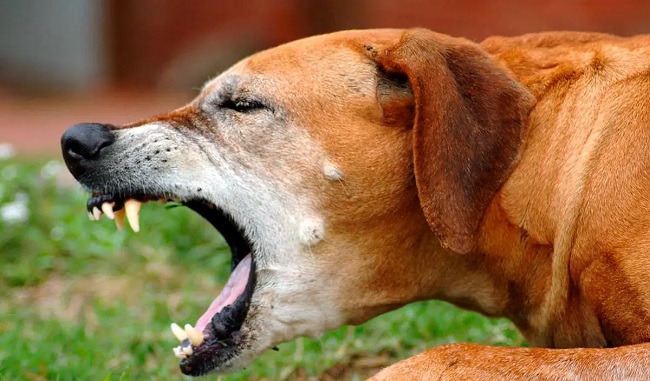
Before carrying out this maneuver, you can use some, somewhat less aggressive methods, to check if the pet can expel the foreign body on which it has choked.
- The first thing is to try keep calm and try not to overwhelm or transmit stress to the animal. If your pet has swallowed something, search manually inside its mouth to try to remove the object with your hands.
- If you are coughing, let him cough as much as he needs, since it is a natural and normally effective way to expel foreign bodies.
6th task before the Heimlich maneuver in a dog: Examine the mouth and throat and, if present, remove objects
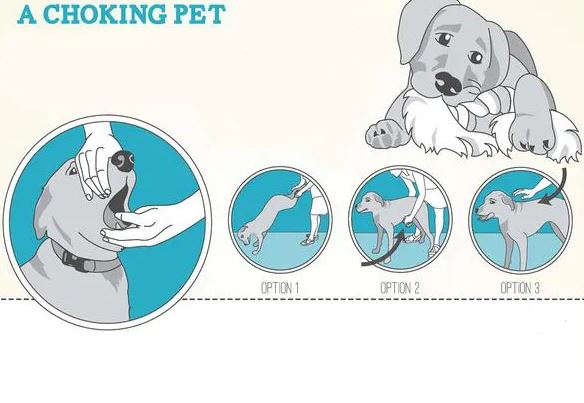
If your dog chokes, starts coughing and trying to expel an object from his throat, if he seems to be choking, you may not have time to get to the vet. In these graphs you can see different techniques to deal with this situation.

Dog choking: Examine his mouth and throat
- First of all, if the dog is choking and cannot remove the object, take him to the vet immediately.
- Secondly, if your dog is unconscious but still breathing, place him in a recovery position and call for emergency help.
- Likewise, it is very important that you do not attempt to give CPR to your dog unless you are trained to do so.
Observe if your dog is breathing normally after removing the object.
If not, give artificial respiration immediately.
- If he has no pulse, perform CPR.
- If resuscitation is required, do what you can immediately and have someone call the vet for further instructions.
How to properly remove objects from your dog's mouth
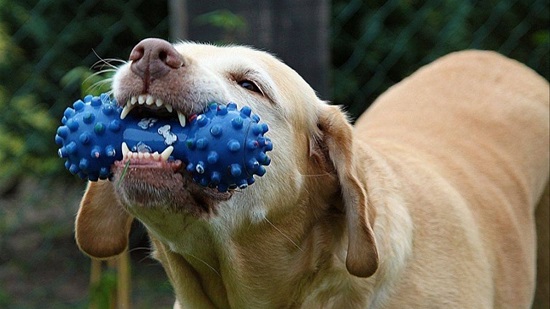
What to consider before removing objects from your mouth
However, there are right ways and wrong ways to do this. If you do it wrong, you could end up being very counter-prudent,
- If you have a dog, you've probably had to remove something from its mouth (a toy, a bone, or even trash).

Tips when a dog chokes on objects in its mouth
Here are some tips for safely removing objects from a dog's mouth:
- Approach the dog calmly and confidently. If you show fear or uncertainty, the dog may sense it and become more agitated.
- Do not pull on the object. This could cause the dog to panic and bite. Instead, try to gently loosen it with your fingers.
- If the object is at the back of your mouth, you may need to gently insert your fingers or a tool (such as a spoon) into the side of your mouth to reach it. Be very careful not to trigger the gag reflex.
- Never try to open a dog's jaws. This is extremely dangerous and could result in serious injury.
Do not put your hand in the mouth of the choking dog
- A dog or cat that chokes because a fragment has become trapped in its trachea has great difficulty breathing. "If we put our hand in its mouth with the intention of extracting the piece, we will block the entry of air even more," adds Cuenca.
- Putting your hand in the mouth of the choking animal has another added problem: it can bite us, since it is normal for the dog or cat to feel pain.
7º If none of these previous steps work, you must resort to the Heimlich maneuver in dog
What is the Heimlich maneuver and what does it consist of?

The Heimlich maneuver for dogs is a technique used to help a dog who is choking or choking.
Heimlich maneuver for dogs: This is a very simple and effective procedure, and it can save your dog's life in a matter of seconds.
- First of all, The Heimlich maneuver for dogs consists of placing your hands behind the dog's neck and making a strong forward and upward blow.
- This will help dislodge the object that is stuck in the dog's throat, allowing it to breathe again.
- Likewise, if your dog is choking, it is important to act quickly and take him to the vet as soon as possible.
- Indeed, early medical treatment can be vital in saving your dog's life.
When is the Heimlich maneuver performed in a dog?
The Heimlich maneuver is a technique that can be used to help a dog that is choking.
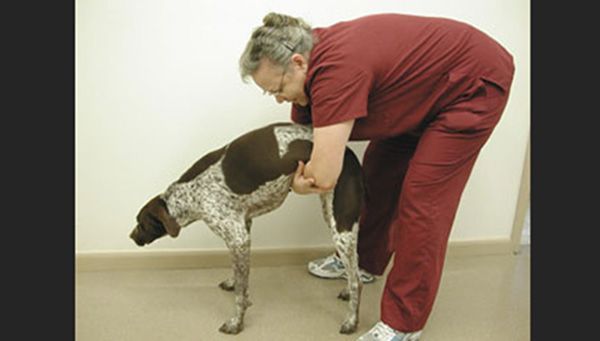
This technique consists of hitting the person on the back so that the object that is stuck is freed. If you suspect that your dog is choking, you should take him to the vet immediately. In the meantime, you can use the Heimlich maneuver to try to help him.
The Heimlich maneuver in a dog is performed only if it is certain that the dog has a foreign object in its throat that has obstructed its airway.
If the object has completely blocked the airway, the animal will lose consciousness. Only in this case, while the heart continues beating, the Heimlich Maneuver is performed on the dog to remove the object from the throat. Lay the dog on his side, place your palms on the last rib and give 4-5 quick, sharp thrusts, check the mouth
How to perform the Wheelbarrow Position if my dog is drowning
How to perform the wheelbarrow technique preceding the Heimlich maneuver in a dog
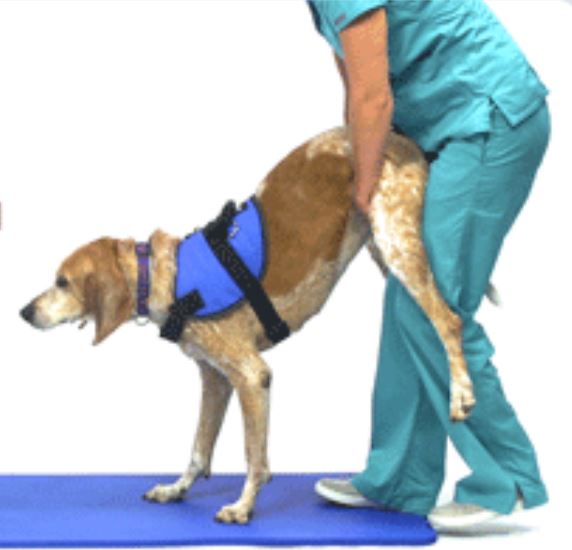
Small dog Wheelbarrow goes down when my dog drowns
Small dog drowning: Wheelbarrow position holding the hind legs

Big dog wheelbarrow position when my dog chokes
Small dog drowning: Wheelbarrow position holding him by the hips
How to do the wheelbarrow position if my dog is choking and coughing

How to perform the wheelbarrow position if my dog is choking and coughing
- If even coughing does not expel the foreign body, or if your pet stops coughing and you are sure that there is a foreign body, you can use the force of gravity to your advantage, placing your pet face down and applying a few shakes, holding it by the hips (in small dogs) so that due to the force of gravity the object tends to be expelled.
- If it is a large dog, we raise its legs as much as possible while it remains supported on the ground by its forelimbs, while we give dry and firm blows with the palm of our hands on the area of the shoulder blades on the side and immediately behind the dog. neck.
- After a few seconds we examined his mouth again to make a second attempt to remove the stuck element with our hand.
Tips How to do the Heimlich maneuver on a dog
Suggestions for performing the Heimlich maneuver on a dog
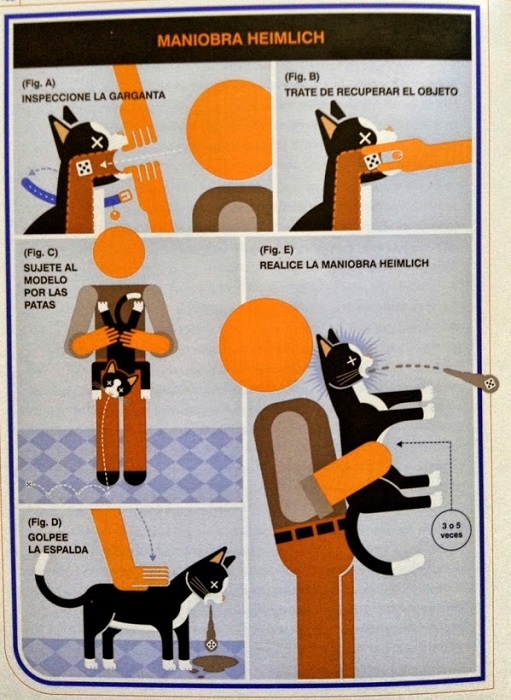
- Make sure your dog is well cared for by a veterinarian before trying to perform any type of Heimlich maneuver.
- The Heimlich maneuver should not be used in humans. If you or someone else has trouble breathing, call the emergency veterinarian immediately.
- • Although the Heimlich maneuver can be effective for most dogs, it is not guaranteed to work in all cases. If your dog does not respond to the Heimlich maneuver, he may need to resort to an advanced medical procedure to remove the object.
- Do not attempt to make an incision in the dog's abdomen on your own. This is an advanced medical procedure and should be performed by a qualified veterinarian.
- If your dog is stuck on an object, do not pull or push it to try to get it out. This could make the situation worse and cause more damage.
- Try to stay calm if your dog gets stuck and has trouble breathing. Remember that the Heimlich maneuver can be effective if performed correctly
How is the Heimlich maneuver done on a dog?
How to do the Heimlich maneuver in dogs in case of choking
When a dog becomes stuck in the airway, it is important to act quickly to prevent suffocation.
The Heimlich maneuver is an effective emergency technique to help dogs who are having trouble breathing. This maneuver can be easily performed on most dogs, and it can save your life.
Instructions How to do the Heimlich maneuver on a dog

Steps to perform the Heimlich maneuver for dogs
- Stand behind the dog and hug him around the waist. Place your clenched fists just below the dog's ribs, in the center of the abdomen.
- Pat him on the back. If you can't help your dog expel the object by leaning him forward, you can vigorously hit his back to help him expel the object that is choking him.
- With the palm of your hand, give him 4 or 5 hard taps between his shoulder blades. Be careful not to use too much force with small dogs, as you risk fracturing their ribs, which can lead to death if a broken rib punctures a lung.
- If it doesn't work at first, try again.
- Drive your fists up and in with quick, determined force. Repeat this maneuver until the object is free of the dog's airway or until you reach the veterinarian.
- If the object does not release after several repetitions of the Heimlich maneuver, other emergency techniques may need to be tried. For example, if the dog is stuck in a leash or rope, it may be necessary to cut the rope to free it. You can also try using a pointed object to make a hole in the stuck object to allow air to flow into the dog's airways.
- The Heimlich maneuver may be enough to help the dog or cat expel the object causing its choking. The animal you will cough, and that strong rush of air usually pushes the stuck fragment outside your body.
- Dry pressure with our hands can also help achieve this. To do this, you must locate the end of the dog's rib cage and hug it with dry pressure but it has DANGERS. (CPR MANEUVER; explained in the point below)
- Call the veterinarian immediately after performing the Heimlich maneuver or making an incision in the dog's abdomen to remove the object. This is an advanced medical procedure and should be performed by a qualified veterinarian.
Video what maneuver to do if your dog chokes or drowns
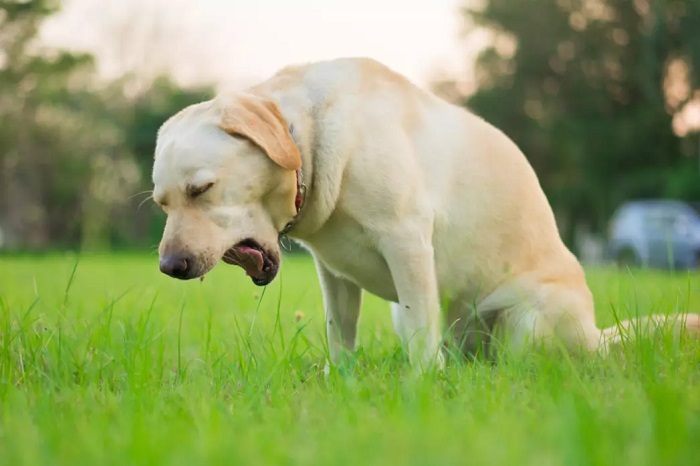
How to perform the heimlich maneuver for dogs if your dog is choking or drowning
After talking about the Heimlich maneuver in dogs and cats, we leave you the following video, which is a little more educational, I hope it is useful to you.
8º IF the Heimlich maneuver in the dog DOES NOT WORK: apply pressure with the dog drowning maneuver CPR
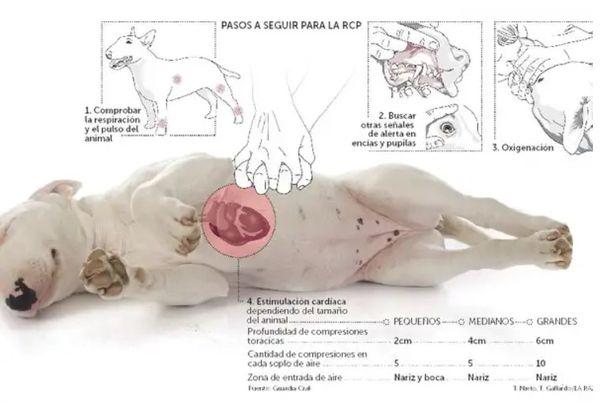
Pressure to remove the object: only for expert hands

Perform CPR if your pet does not respond to any of the above maneuvers
However, this maneuver is not without danger: inexperienced hands in first aid for dogs or cats may have difficulties. If the animal's stomach is squeezed, the hug will be ineffective and even dangerous.
If the furry friend has also just eaten, it is likely that this pressure will cause vomiting, with undesirable consequences: the expulsion of food will further block the dog or cat's airways, making it more difficult for them to breathe.
Therefore, without experience in first aid for pets, the correct thing to do is to simply keep the dog or cat's hind legs raised. And try to relax the animal as much as possible (with affectionate words). With any luck, the object will eject on its own.
CPR First AID for pets
If your pet still does not respond to any of these maneuvers, he may be having a heart attack.

- If your pet still does not respond to CPR, he or she may be having a heart attack.
- In this case, it is important to perform CPR (cardiopulmonary respiration).
- To do CPR on a dog, hold the dog horizontally and blow air into its nose until you see the chest expand.
- Then continue blowing air every 2 to 3 seconds until your pet is conscious again.
- Once you have finished performing CPR, it is important to take your pet to the vet immediately.
- If your pet continues to have difficulty breathing or does not respond to any of these maneuvers, it is important to take him to the veterinarian immediately.
- Early medical treatment can be vital in saving your pet's life.
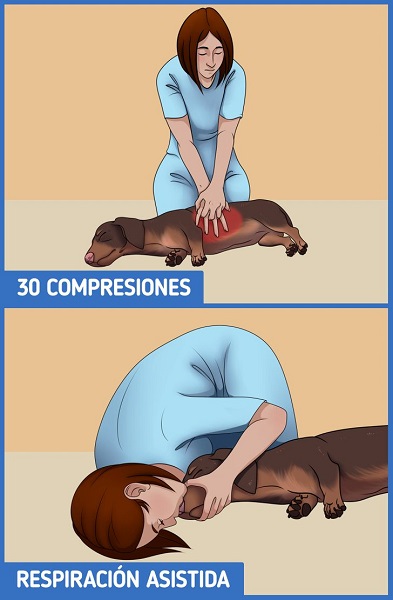
How to perform CPR dog drowning maneuver ACCORDING TO SIZE
How to perform CPR on a dog depending on the size of the pet
If the above actions do not work, perform CPR: Even more so if your pet faints or stops breathing, it is better to start CPR.
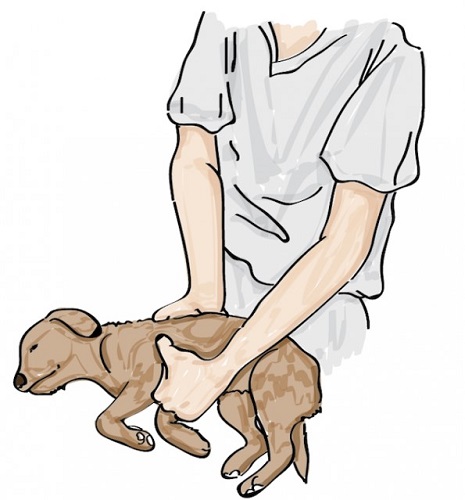
How to start the CPR maneuver depending on size: If you have a cat or a small dog
- First, lay him on his side on a flat surface, stretch his neck and close his mouth.
- Take a deep breath and expel the air from your mouth towards his nose, taking care that the air does not escape with your two hands.
- Do this three times and then perform 100 to 120 compressions by squeezing with your thumb and index finger just below the elbow of the top paw closest to you.
- Every 30 compressions, exhale inside your nose.
- If your chest inflates, you're doing it right.
- Repeat until you can detect the pulse. You can place your fingers between his thigh and trunk to see if you can feel his circulation.
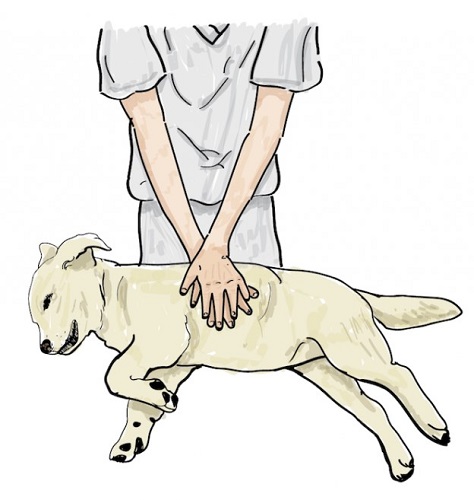
How to do CPR if your dog is medium or large
- Instead of performing compressions under his paw, do them on his abdomen by placing one palm of your hand on his body and the other on top of that hand.
- Keep your arms straight and press hard.
- If your chest inflates, you're doing it right.
- Repeat until you can detect the pulse. You can place your fingers between his thigh and trunk to see if you can feel his circulation.
How to perform pet first aid: Cardiopulmonary resuscitation in dogs and cats
How to do dog drowning maneuver: cardiopulmonary resuscitation in dogs and cats
One of the most terrifying moments for any of the family members of a dog or cat is when it suffers an accident or faints and stops breathing. 🆘 🐶 🐱
In this video we will explain in detail the first aid maneuver that can save your pet's life if you do not have access to a clinic or until it receives veterinary treatment. 🚨 💓
What to do in case of suffocation in dogs, first aid and resuscitation
9º Once recovered: assess artificial respiration
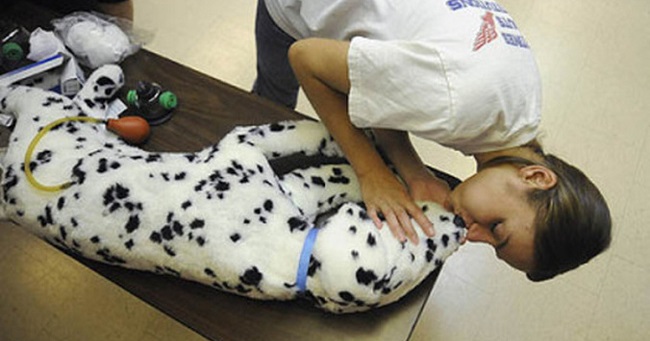
When the animal's breathing has been suspended for a long time
- When the animal's breathing has been suspended for a long time, it may continue not breathing even if it has already freed itself from the foreign object, so it will be necessary to give it artificial respiration or cardiopulmonary resuscitation, depending on the circumstances.
- If the dog or cat is saved, it is still necessary to take it to the vet to be checked.
10º Take your pet to the vet: Diagnostic tests after the suffocation situation
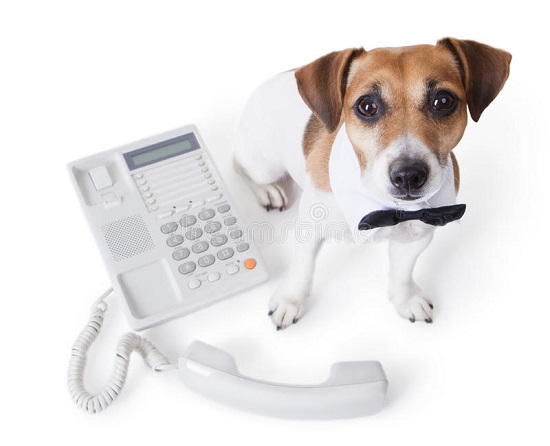
Take your dog or pet to the vet.
Once the dog has overcome the choking situation, it is important to take it to the veterinarian for a complete check-up to rule out any underlying medical problems.
Even if you managed to remove the object, we recommend taking it to the vet to check it and determine if it has any other problems or injuries.
The dog may need diagnostic tests, such as x-rays or blood tests. Treatment for a dog that has drowned can be both medical and surgical, depending on the injuries that have occurred.
- Keep him calm and take him to the vet as quickly and safely as possible.
- Pay close attention to your pet to make sure it can breathe normally.
Dangerous symptoms after drowning
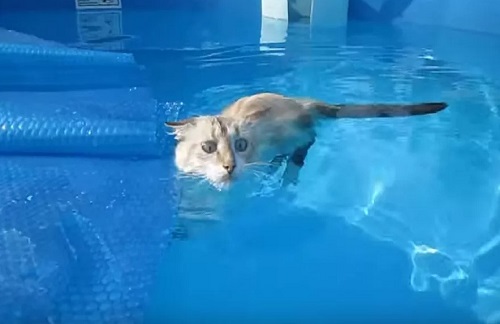
Symptoms to detect that your pet is still not safe after resuscitation from drowning after falling into water
If your pet falls into the pool and is submerged in the water for some time, you may think you are out of danger if you get him out quickly enough. However, cats can experience near drowning, a form of suffocation, even 24 hours after the initial event.
Symptoms of near-drowning in cats include bluish gums, red, frothy regurgitation, and a gurgling sound in the chest.
Possible consequences after the dog almost drowned in the pool

If you suspect your pet is nearly drowning, take him to your veterinarian as soon as possible. When left untreated, potential water in the lungs can collapse the organ.
- A dog can drown in water or any other liquid, causing suffocation. Asphyxiation is a serious situation and can lead to the death of the dog if the appropriate maneuvers and diagnostic tests are not carried out in time.
- The symptoms of drowning in a dog are similar to those in a human: difficulty breathing, cough, dyspnea, anxiety and agitation. If the dog is unconscious, it is necessary to perform artificial respiration as soon as possible.
- Once the dog has overcome the choking situation, it is important to take it to the veterinarian for a complete check-up to rule out any underlying medical problems. The dog may need diagnostic tests, such as x-rays or blood tests. Treatment for a dog that has drowned can be both medical and surgical, depending on the injuries that have occurred.
Observe if your dog is breathing normally after removing the object.
If not, give artificial respiration immediately.
- If he has no pulse, perform CPR.
- If resuscitation is required, do what you can immediately and have someone call the vet for further instructions.
Tips to avoid drowning dogs in swimming pools
Products to prevent dogs from drowning
Preventing drowning in dogs is the best way to avoid this type of situation. Dogs must be prevented from having access to places where they could drown, such as ponds or swimming pools. It is also important that dogs are able to swim and wear a life jacket when in contact with water.
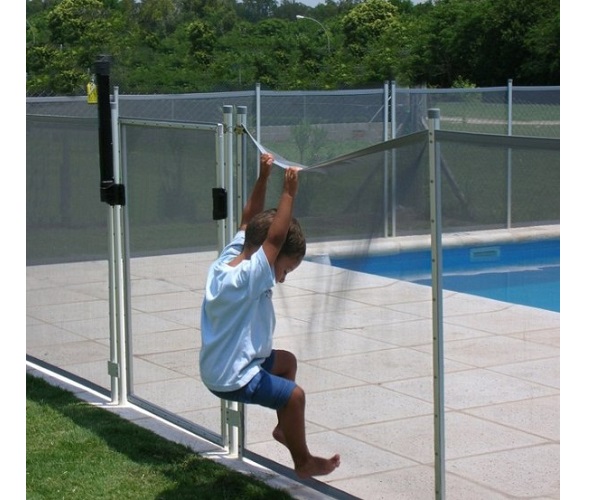
Models of security fences for swimming pools

Pool dog lifeguard: guaranteed prevention against drowning
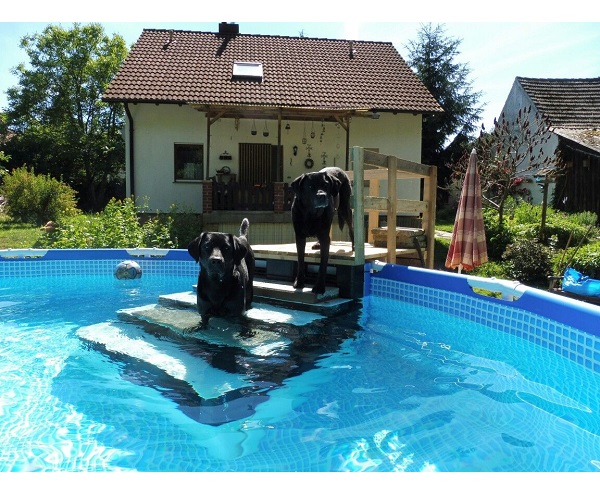
The Best Pool Pet Ladder: Complete Guide and Expert Tips
